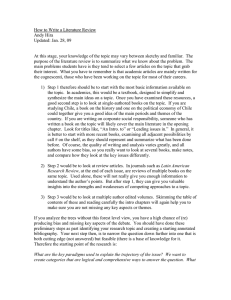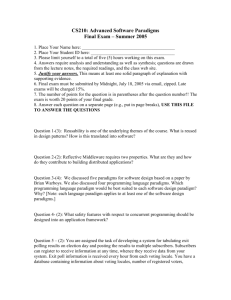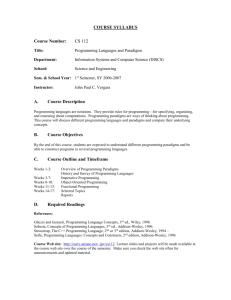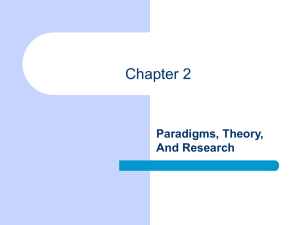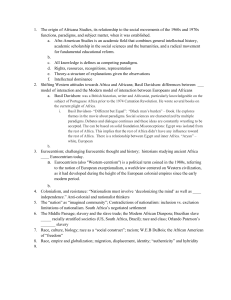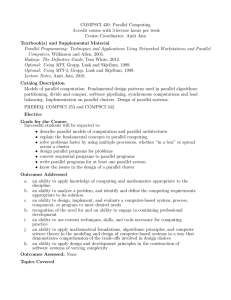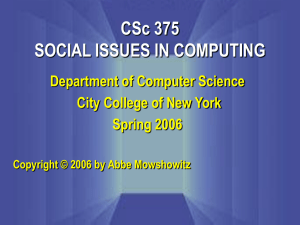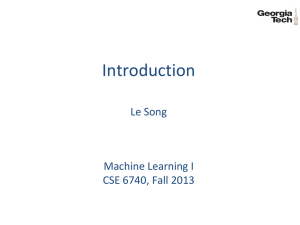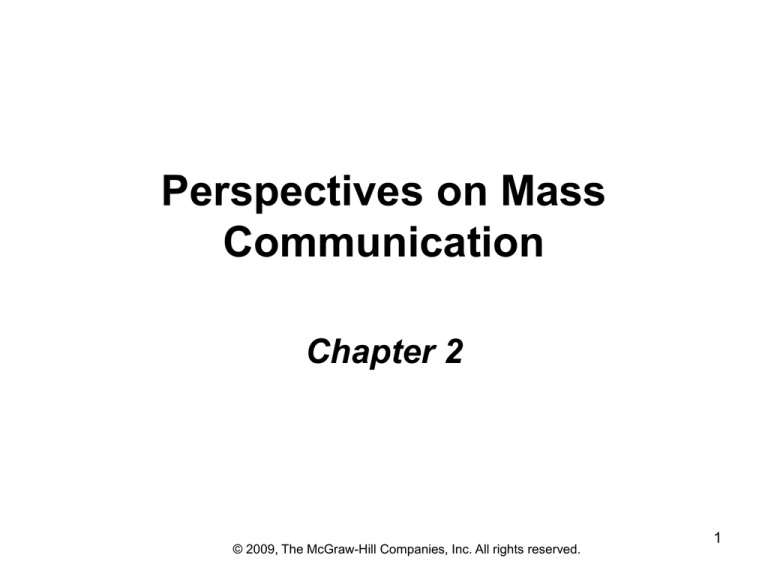
Perspectives on Mass
Communication
Chapter 2
© 2009, The McGraw-Hill Companies, Inc. All rights reserved.
1
CHAPTER OUTLINE
• Paradigms
• Functional Analysis
• Critical/Cultural Studies
2
Paradigms
• Paradigms are models guiding how we think.
Paradigms relevant to mass communication
processes include:
– Functional Approaches
– Critical/Cultural Approaches
• Paradigms are useful because they:
– Provide a perspective to examine mass
communication
– Generate concepts to understand media behavior
– Help identify important elements in the process
3
FUNCTIONAL ANALYSIS
• Functional approach: Something is best
understood by examining how it is used.
– For mass media, this means examining how
audiences interact with media and how they
use media
4
The Role of Mass Communication
• Different media provide different primary
uses.
• Macroanalysis: how media functions for
the society as a whole
• Microanalysis: how media functions for
the individual
5
Functions of Mass Communication
for Society
(1 of 6)
• Societal level (Macroanalysis)
• Society requires certain communication
needs be met.
• Some are handled by the mass media.
• We must consider the consequences of
performing these functions by media.
• Dysfunctions: negative consequences
• Media functions are not mutually exclusive
6
Functions of Mass Communication
for Society
(2 of 6)
• Surveillance
– Warning
– Instrumental
• Consequences
– Speed of propagating truth and error
– Most news not verifiable by receiver
– Credibility
– Anxiety
– Status Conferral
7
Functions of Mass Communication
for Society
(3 of 6)
• Interpretation
– Express viewpoints and analysis
• Consequences
– Wide range of contrasting viewpoints
– Weigh all sides before making decision
– Greater depth of expertise available
– No guarantee interpretations are accurate
– People become overly dependent on media
for interpretation
8
Functions of Mass Communication
for Society
(4 of 6)
• Linkage
– Bring together various elements of society
• Consequences
– Build new groups or communities
– Hate groups or terrorist groups use of Internet
9
Functions of Mass Communication
for Society
(5 of 6)
• Transmission of Values (Socialization)
– People adopt behaviors or values of a group
• Consequences
– Stabilize society by creating bonds
– Encourages the status quo
– Media can help enforce social norms
• TV and Socialization
– TV has great potential in socialization
• Violent or stereotypical content
10
Functions of Mass Communication
for Society
(6 of 6)
• Entertainment
– Importance of this function has grown as
Americans have had more leisure time
• Consequences
– Content appeals to lowest common
denominator of taste
– Will mass media turn us into a nation of
watchers instead of a nation of doers?
11
How People use Mass Media
(1 of 3)
• Uses-and-gratifications: how people use
the media
– Individual level (microanalysis)
• People have certain needs or desires
• Needs satisfied by media and non-media sources
– Four categories of media uses, reflecting
needs.
12
How People use Mass Media
(2 of 3)
• Cognition
• Diversion
– Stimulation
– Relaxation
– Emotional Release (catharsis)
• Social Utility
– Conversational Currency
– Parasocial Relationships
• Withdrawal
13
How People use Mass Media
(3 of 3)
• Content and context both affect media use
• Assumptions of functional approach:
– Audiences are active
– Needs provide motivation for media use
– Other sources exist to satisfy needs
– People are aware of their needs and can
verbalize them (surveys)
14
CRITICAL/CULTURAL STUDIES
• Contrasts with functional approach.
– More qualitative, humanistic
• Examines different concepts
– Ideology, culture, politics, social structure
• as related to the role of media in society
15
History
(1 of 2)
• 1930s-1940s: Marx and the Frankfurt
School
– Who controls the means of production?
– Media industry exploits the masses
• Glorifies capitalism, reinforces status quo
• 1950s-1960s: British cultural studies
– Mass media audience can redefine the
products of mass culture, and create new
definitions for their own purpose
16
History
(2 of 2)
• 1970s-1980s: Varied approaches
– Feminist scholars
• Patriarchy: Gender-based inequalities of wealth
and power
– Communication as ritual
– Cultural myths embodied in mass
communication
17
Concepts
(1 of 2)
• Culture: common values holding people
together
• Text: object of analysis, broadly defined
• Meaning: interpretations of texts
• Polysemy: different audiences, different
meanings
• Ideology: deeply imbedded beliefs, especially
regarding political and social themes
• Hegemony: dominance and control accepted as
natural and normal
18
Concepts
(2 of 2)
• Functional and cultural/critical approaches
are different
– Difference has led to tension among scholars
– Both approaches are valuable
19

